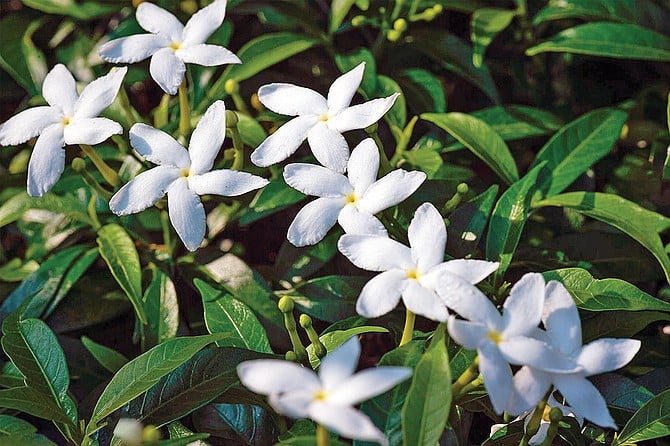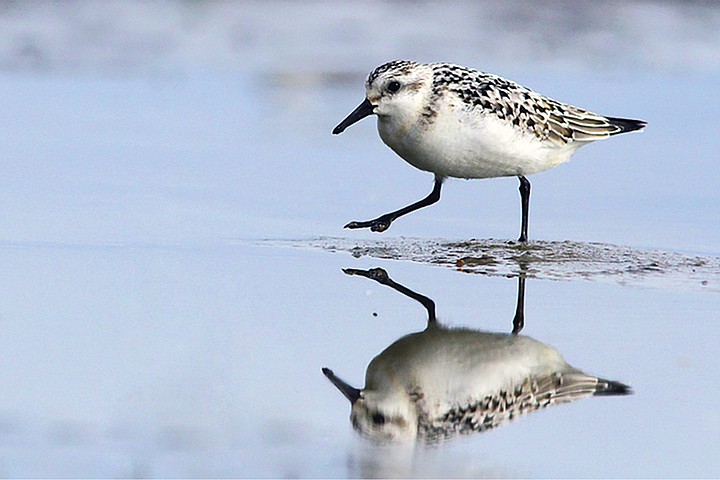 Facebook
Facebook
 X
X
 Instagram
Instagram
 TikTok
TikTok
 Youtube
Youtube

Jasmine’s Thick, Sweet Odor wafts on the night breezes this time of year, especially throughout the older, well-landscaped neighborhoods of San Diego. The exotic odor is produced by the flowers of true jasmines (genus Jasminum), as opposed to the so-called “star jasmine” (genus Trachelospermum) which blooms in the late spring and early summer.

Shore Birds migrating southward are beginning to arrive in San Diego County. Through fall and winter various ducks, sandpipers, and plovers will be spotted in increased numbers in the county’s coastal wetlands. Best bird-watching spots include the Tijuana River estuary, south San Diego Bay, the San Diego River flood channel, Peñasquitos Lagoon, San Elijo Lagoon, Batiquitos Lagoon, and Buena Vista Lagoon.
As August proceeds and nights begin to turn chilly, the Great Square of Pegasus looms up in the east, balancing on one corner. Its stars are only 2nd and 3rd magnitude, and your fist at arm’s length fits inside it.
Low in the northwest or north at the end of summer twilights, would you recognize noctilucent clouds if you saw them? They’re the most astronomical of all cloud types, with their extreme altitude and formation on meteoric dust particles. And they’re fairly rare — though becoming more common in recent years as the atmosphere changes.
Now that the Moon is out of the evening sky, it’s prime Milky Way time. After dark, the Milky Way runs from Sagittarius in the south, up and a bit left left across Aquila and through the big Summer Triangle high overhead, and on down through Cassiopeia to Perseus low in the north-northeast.
The above comes from the Outdoors listings in the Reader compiled by Jerry Schad, author of Afoot & Afield in San Diego County. Schad died in 2011. Planet information from SkyandTelescope.org.


Jasmine’s Thick, Sweet Odor wafts on the night breezes this time of year, especially throughout the older, well-landscaped neighborhoods of San Diego. The exotic odor is produced by the flowers of true jasmines (genus Jasminum), as opposed to the so-called “star jasmine” (genus Trachelospermum) which blooms in the late spring and early summer.

Shore Birds migrating southward are beginning to arrive in San Diego County. Through fall and winter various ducks, sandpipers, and plovers will be spotted in increased numbers in the county’s coastal wetlands. Best bird-watching spots include the Tijuana River estuary, south San Diego Bay, the San Diego River flood channel, Peñasquitos Lagoon, San Elijo Lagoon, Batiquitos Lagoon, and Buena Vista Lagoon.
As August proceeds and nights begin to turn chilly, the Great Square of Pegasus looms up in the east, balancing on one corner. Its stars are only 2nd and 3rd magnitude, and your fist at arm’s length fits inside it.
Low in the northwest or north at the end of summer twilights, would you recognize noctilucent clouds if you saw them? They’re the most astronomical of all cloud types, with their extreme altitude and formation on meteoric dust particles. And they’re fairly rare — though becoming more common in recent years as the atmosphere changes.
Now that the Moon is out of the evening sky, it’s prime Milky Way time. After dark, the Milky Way runs from Sagittarius in the south, up and a bit left left across Aquila and through the big Summer Triangle high overhead, and on down through Cassiopeia to Perseus low in the north-northeast.
The above comes from the Outdoors listings in the Reader compiled by Jerry Schad, author of Afoot & Afield in San Diego County. Schad died in 2011. Planet information from SkyandTelescope.org.
Comments